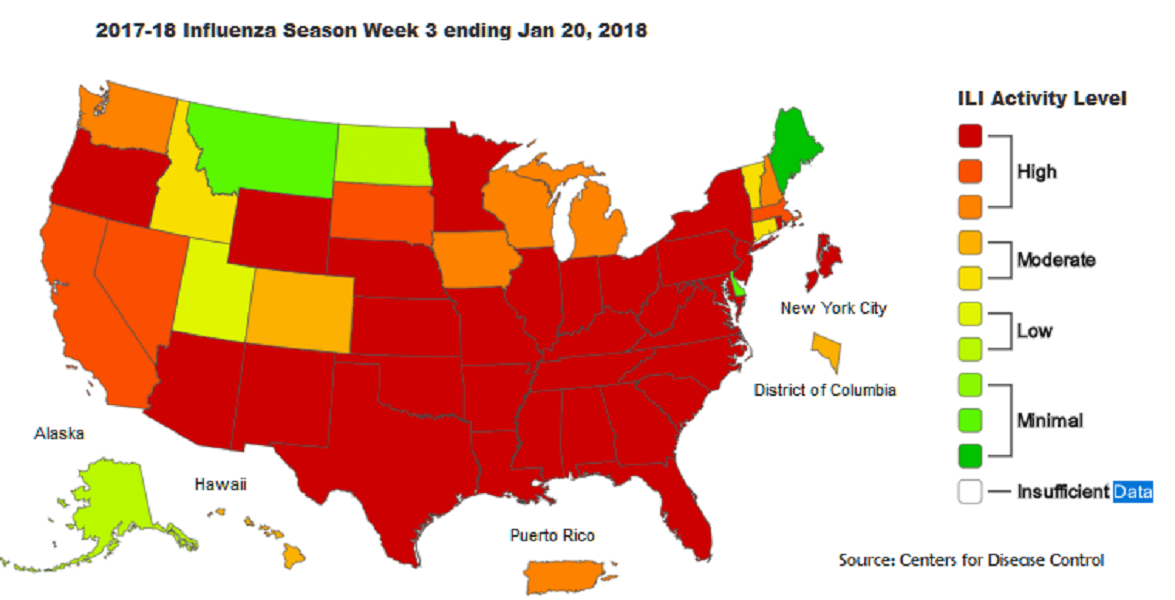Those sniffling, coughing sounds you hear as we walk through the office are costing you money. They’re also a pretty strong hint your managers didn’t get the message about telling people to stay home if they come down with the flu.
By one estimate, American businesses are facing a $9 billion sick pay bill due to this year’s particularly virulent strain of influenza. Doctors and clinics are reporting that 6.6% of their patient visits are flu related. That compares to a typical 2.2% at this time of the year. And there’s no reason to believe things are going to improve any time soon. The Centers for Disease Control reported last week that 39 states and New York City and Puerto Rico are experiencing “high activity.” That’s how the CDC says “influenza-like illnesses” — the flu — are widespread and much higher than average. Only Hawaii and the District of Columbia have so far experienced only limited flu cases.
In Southern California hospitals are erecting tents in their parking lots to accommodate the numbers. Around the country, schools are reporting high rates of absenteeism and in at least a dozen states schools and some entire districts have closed due to high rates of flu-related absenteeism. The CDC reported 37 children, mostly infants, have died. Though the CDC doesn’t tally adult deaths, state health departments are reporting flu fatalities, mostly among the elderly, but also including Baby Boomers. The Arkansas health department reported 69 adult deaths, while earlier this month, Alabama declared a state public health emergency asking, “Employers and schools that require doctor excuses for absences are asked to waive this requirement during this time to encourage those who are sick to stay home and not spread disease.”
That should be enough for any employer to take the situation seriously. Instead of applauding workers who decide to “tough it out” and show up sick, the smart decision is to send them home. The even smarter decision is to make it clear to managers and staff they should stay home at the first sign of the flu. Avrohom Gefen, a partner at Vishnick McGovern Milizio in Long Island, NY, told Newsday that employers have the right to send home sick employees. Having a policy that says “In the event of an illness, we have the discretion and right to ask employees not to report to work,” is a wise idea.
The typical sick leave benefit of 5 days should be enough to keep infected workers away while they are still contagious. An infected worker can easily spread the flu to others, beginning as soon as one day before symptoms appear and lasting for up to a week after becoming ill.
However, if your company has no sick leave policy and doesn’t offer sick days, you still have the right to send home sick employees. Consider allowing them to use vacation or work from home, if that is possible. Permitting them to continue coming into the office is nothing short of rolling the dice with the rest of your workforce. And so you know, FMLA doesn’t cover the flu, unless complications arise, as it has for thousands of Americans who have had to be hospitalized.
And if you’re thinking that the flu shots you offered the workforce last fall will protect everyone, you should know experts are saying it’s only effective in — optimistically — 30% of cases.
